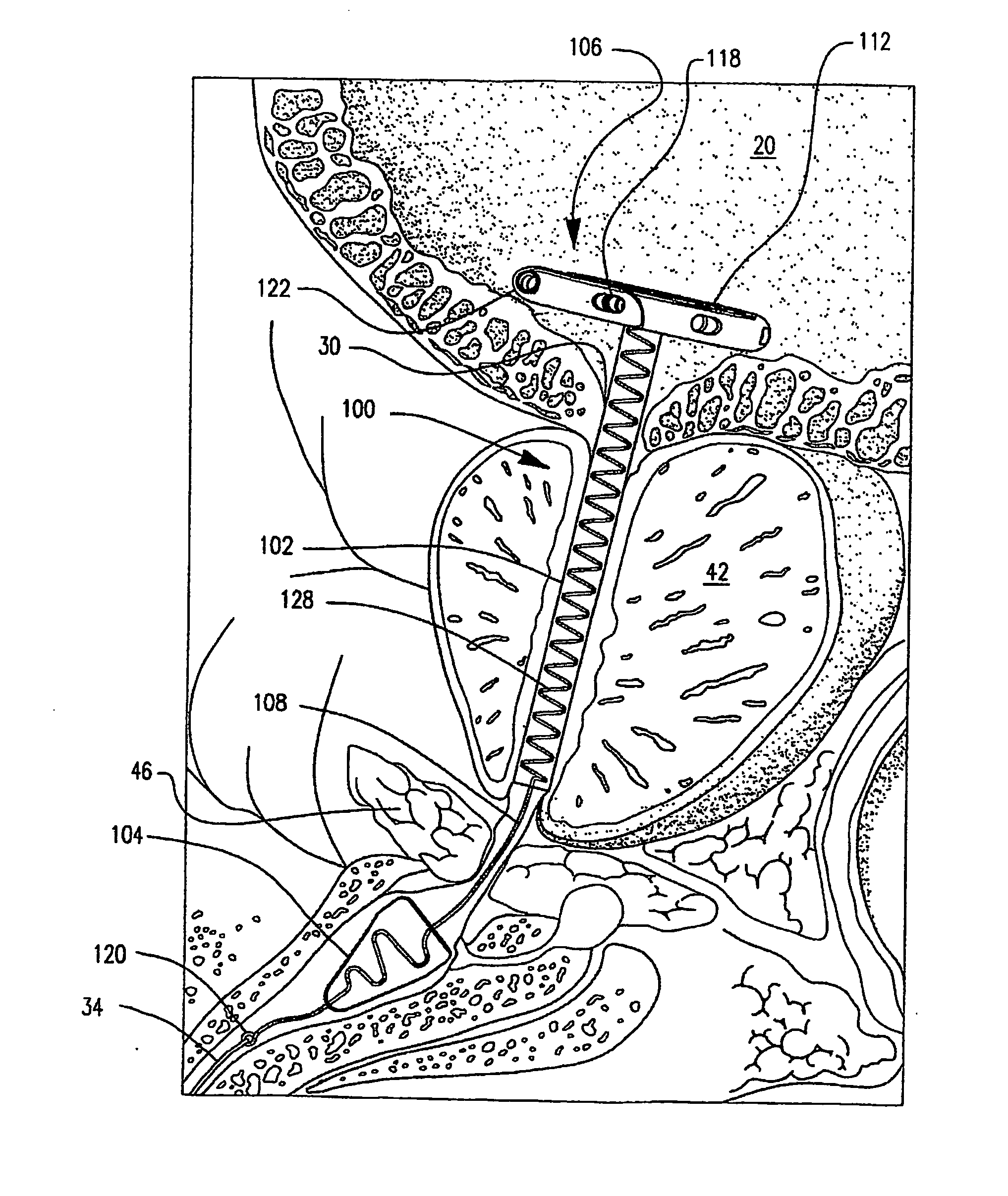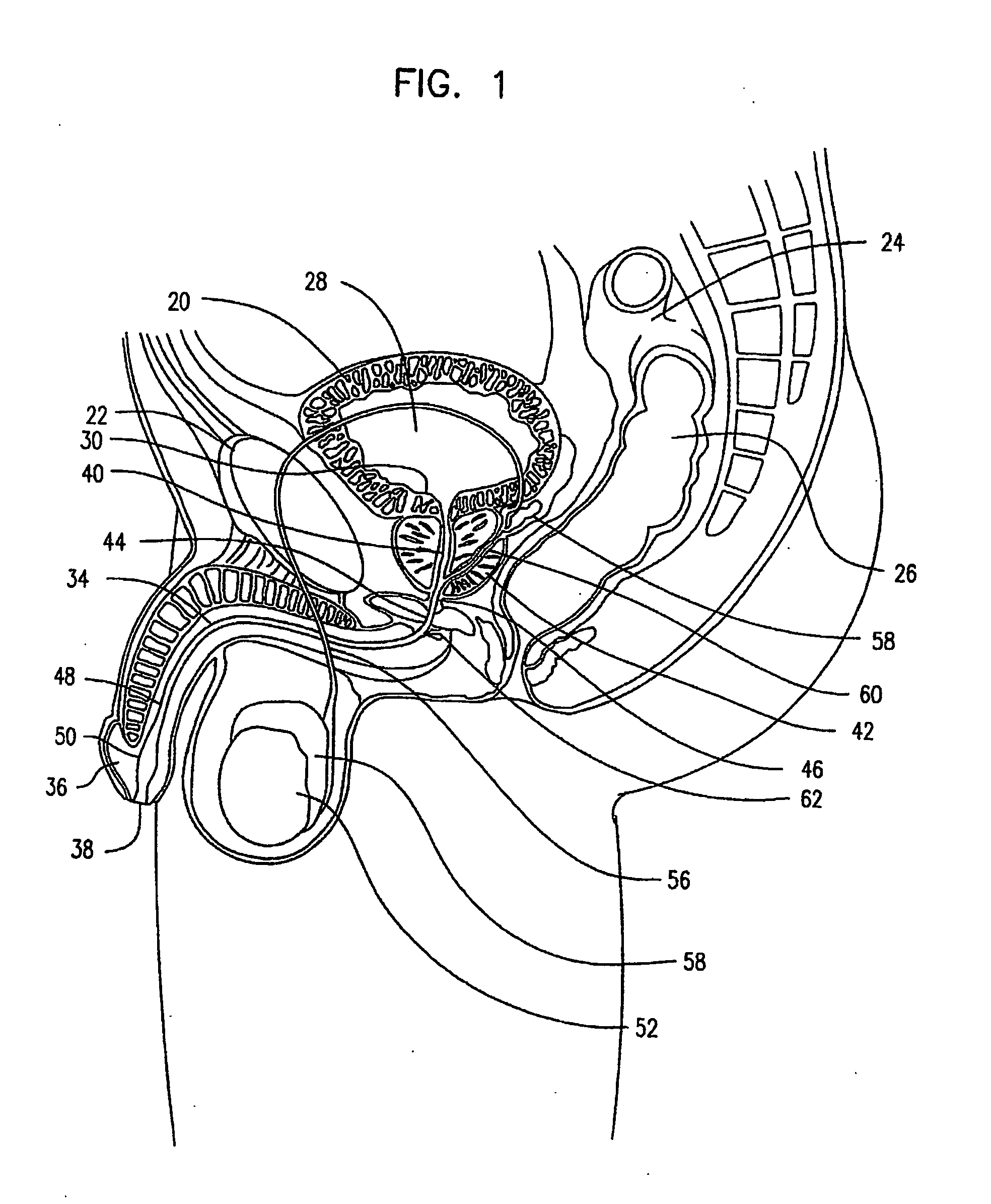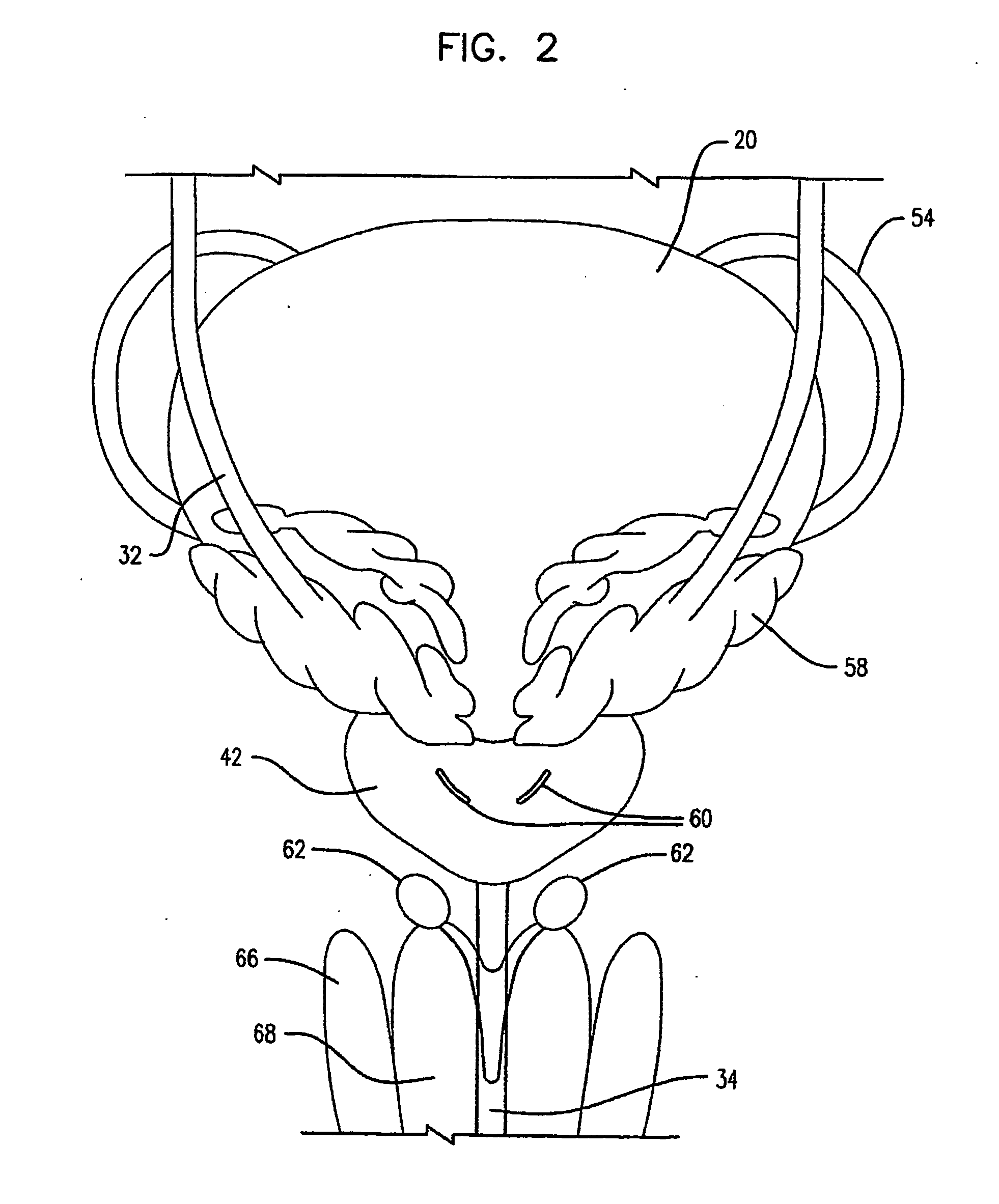Self-adjusting endourethral device & methods of use
a self-adjusting, endotracheal technology, applied in the field of medical devices, can solve the problems damage to the epithelium and detrusor muscles, and discharge of bladder contents can be a source of serious and distressing problems, so as to improve urine drainage, facilitate urination, and facilitate urination
- Summary
- Abstract
- Description
- Claims
- Application Information
AI Technical Summary
Benefits of technology
Problems solved by technology
Method used
Image
Examples
Embodiment Construction
[0052]Prior to a detailed discussion of the subject device, its several embodiments, and attendant systems, an abbreviated description of the anatomical environment of same is helpful. In furtherance thereof, FIGS. 1 & 2 generally illustrate the physiologic structures of the male urinary system, as well as the male reproductive system. A sectional side view of the male urinary system is presented in FIG. 1 with a front view of select structures of FIG. 1 illustrated in FIG. 2.
[0053]In connection to the urinary system, the bladder 20, generally centrally located and residing posterior of the pubic bone 22 and anterior of the sigmoid colon 24 and rectum 26 (FIG. 1), temporarily stores urine 28, and periodically expels it when the bladder neck 30 (i.e., the lower base of the bladder) opens, as the bladder 20 contracts. Urine, produced by the kidneys (not shown), passes into the bladder via dedicated ureters 32 (FIG. 2), and periodically exists therefrom via the urethra 34, a continuous...
PUM
 Login to View More
Login to View More Abstract
Description
Claims
Application Information
 Login to View More
Login to View More - R&D
- Intellectual Property
- Life Sciences
- Materials
- Tech Scout
- Unparalleled Data Quality
- Higher Quality Content
- 60% Fewer Hallucinations
Browse by: Latest US Patents, China's latest patents, Technical Efficacy Thesaurus, Application Domain, Technology Topic, Popular Technical Reports.
© 2025 PatSnap. All rights reserved.Legal|Privacy policy|Modern Slavery Act Transparency Statement|Sitemap|About US| Contact US: help@patsnap.com



